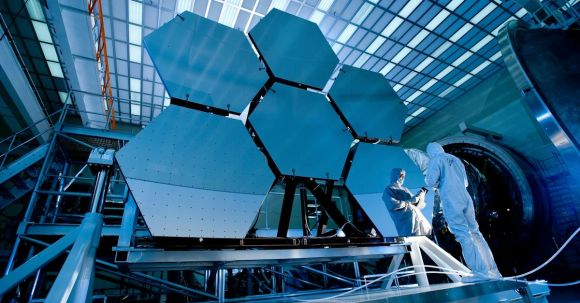Since its launch in December 2021, the James Webb Space Telescope (JWST) has been capturing the attention of scientists and space enthusiasts alike. With its advanced technology and unprecedented capabilities, this telescope promises to revolutionize our understanding of the universe. In this article, we will explore some of the exciting discoveries that the JWST has made possible.
Unveiling the Birth of Stars and Planets
One of the primary goals of the JWST is to study the formation of stars and planets. By observing the infrared light emitted by young stars and their surrounding disks, scientists hope to gain insights into the early stages of planetary formation. Already, the telescope has provided stunning images of protoplanetary disks, revealing intricate patterns and structures. These observations have allowed scientists to refine their models of planet formation, bringing us closer to understanding how our own solar system came to be.
Peering into the Distant Universe
Another area of exploration for the JWST is the study of galaxies in the early universe. By detecting and analyzing the light from some of the most distant galaxies ever observed, the telescope is shedding light on the cosmic history of our universe. The JWST’s ability to see in the infrared range allows it to penetrate through cosmic dust, revealing galaxies that were previously hidden from view. This has led to the discovery of ancient galaxies that existed just a few hundred million years after the Big Bang, providing valuable insights into the early stages of galaxy formation.
Unraveling the Mysteries of Exoplanets
Exoplanets, or planets orbiting stars outside our solar system, have long fascinated scientists. With the JWST, we now have a powerful tool to study these distant worlds in unprecedented detail. By analyzing the atmospheres of exoplanets, scientists hope to find signs of habitability and even detect the presence of potentially life-supporting conditions. The JWST’s ability to detect the chemical composition of exoplanet atmospheres will be crucial in determining if these distant worlds could harbor life as we know it.
Probing the Secrets of Dark Matter and Dark Energy
Dark matter and dark energy are two of the greatest mysteries in modern astrophysics. While we cannot directly observe these enigmatic substances, the JWST can indirectly study their effects on the universe. By observing the gravitational lensing caused by massive galaxy clusters, the telescope can help us understand the distribution of dark matter in the universe. Additionally, the JWST’s observations of distant supernovae can provide valuable data on the expansion rate of the universe, shedding light on the nature of dark energy.
The James Webb Space Telescope: A New Era of Discovery
The James Webb Space Telescope represents a new era of discovery in astronomy. With its advanced technology and unprecedented capabilities, this telescope is poised to revolutionize our understanding of the universe. From unraveling the mysteries of planet formation to probing the secrets of dark matter and dark energy, the JWST is providing us with a wealth of new data and insights. As scientists continue to analyze the telescope’s observations, we can look forward to even more groundbreaking discoveries in the years to come.





